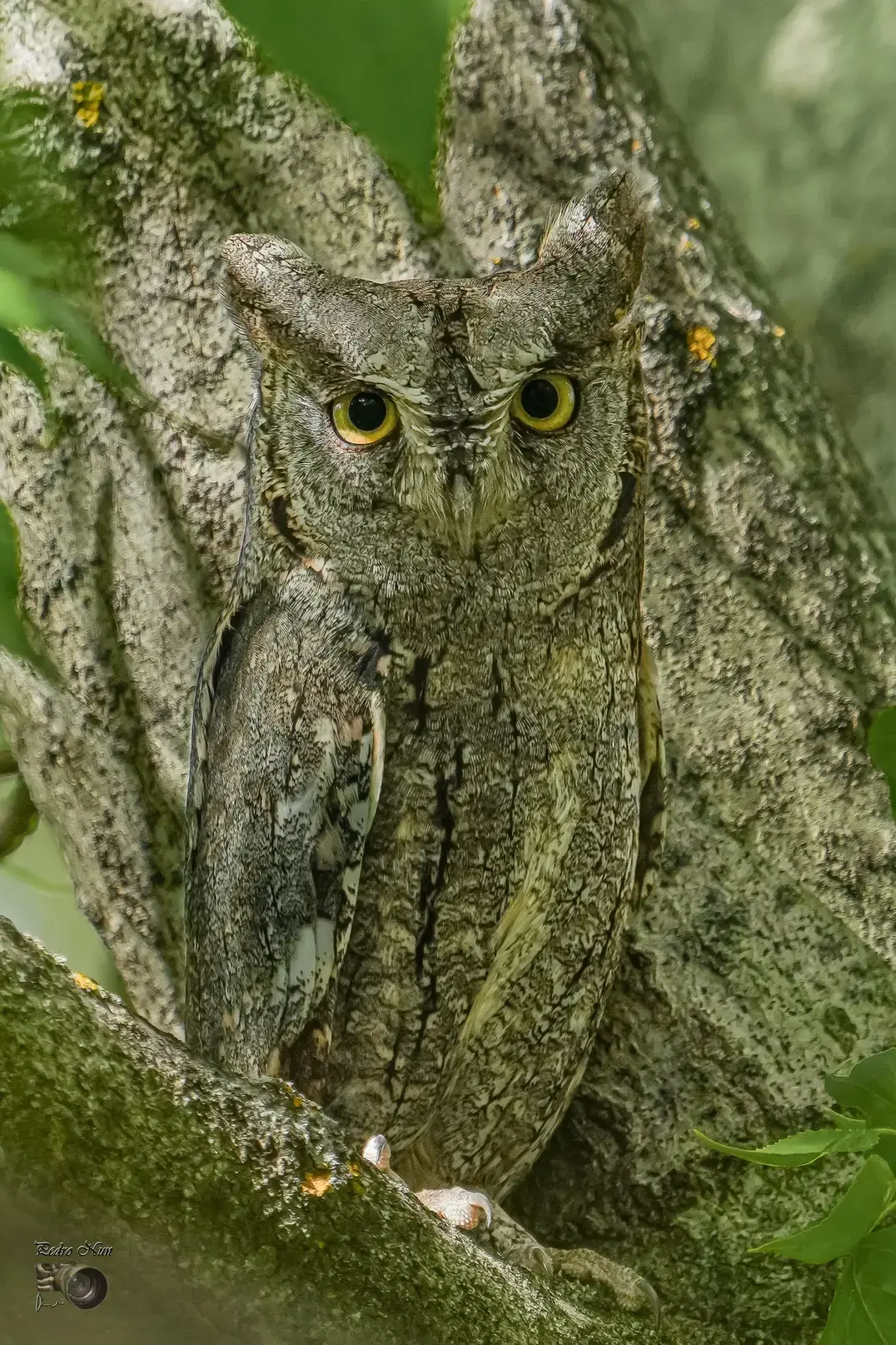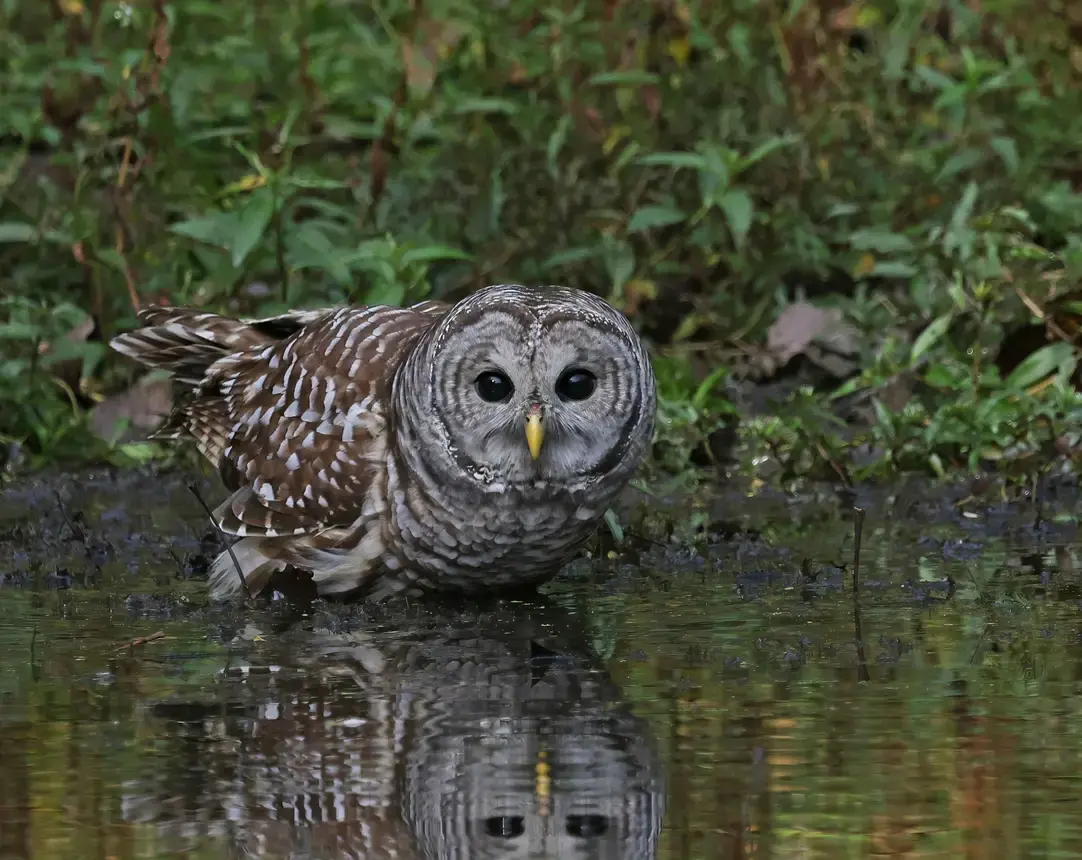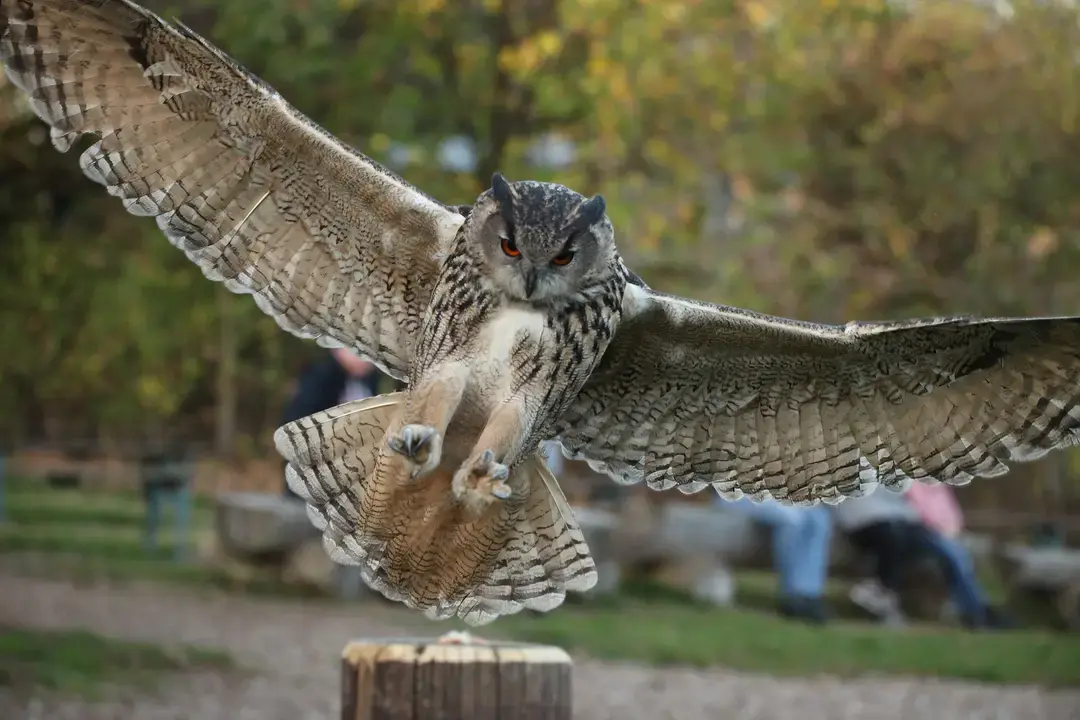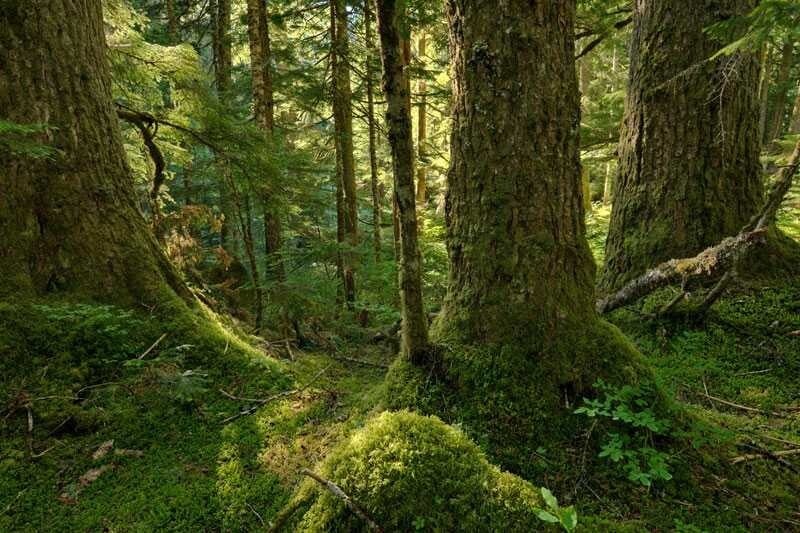
That was my initial gripe with the other commenters. Nobody ever likes the one-size-fits-all software platforms. It's always got too much of what you dont want and not enough what you do. All these social platforms are free., why mix them when we can use the ones we want. Installing Lemmy and Bluesky apps is easy, but if you later decide you dont want Bluesky, you just uninstall. If all those people would come here, you'd have to get people to defederate or you have to pack up and leave for another instance. That seems a lot more hassle to me than just using a second app.
Lemmy is great as-is. Let's be proud of it. It gives me a day's worth of content as it stands now....probably more than I actually should use it already!
I'm always surprised the variety of things I see owls actually eat. If it's meat and fits down their mouth, there's not too much I haven't heard of being found in an owl's tummy at this point!
Yup, I just replied to another comment, what's so bad about having a place that's just regular people? I enjoy having my comments actually read here and getting to know some of you to some level. I'd lose interest in this place if it turned into new Twitter. I can't compete with Taylor or Beyonce or whoever the flavor of the week is. We can have both platforms if we so choose, so why wreck one for the sake of another?
Exactly. For all the things that typically get complained about: one product trying to do everything, people coming in to monetize things, feeling like your voice gets lost in oceans of comments, it seems like people forget that when it comes to the Fediverse.
The same guys that spent all that time being mad about potential federation with Threads are mad that this place isn't going to be Twitter 2.0? It doesn't make sense to me. If you want ads and celebs, go see them at their place. Keeping this just place us regular people doesn't need to be a negative. There's room for both.
I saw the mention of it protecting abortion rights, but I was confused about that because as far as I know, nowhere requires someone to be married for abortions or any type of healthcare.
The quotes and comments I saw made it sound like the stance was this doesnt happen enough we should risk losing any rights unnecessarily, but I feel there should have been some specifics mentions what those rights they're protecting actually were. The stats seem all over the place too, from as low as IIRC around 50 child marriages since 2019 to an estimated 1600.
This all seems like something people should have some real facts and figures on, but that I cant find them is really raising my eyebrows for a number of reasons.
I don't disagree that what you're saying shouldn't be controversial, but after the crying they've had about athletes taking a knee, a one-off promotional beer can, and whatever other snowflake stuff I've repressed memories of, it just sounds extremely risky.
Lethal response training as a whole definitely needs work, but it's something beyond the abilities of volunteer vets and animal handler. It feels like a psychological issue more than an educational one I obviously care about the animals, but shooting people is a greater priority, and reducing that should in turn help the doggos also.
We're here for fun. Celebs are on social media as part of their brand. It's them doing business, and they're going to use what the feel will reach the largest audience with the least effort on their part, and something with corporate backing likely has customer support for moderation, hacking, and whatever else. They're not here for a digital revolution, they're here to keep their name and income stream out there.
I imagine it's the same reasoning why a business will pay for Red Hat when they could run Linux for free. It may or may not be the best option, but they feel it offers tangible benefits.
Rescues have no guaranteed funding. I have not encountered one anywhere in the world that gets a single cent of public money. They also get free help rescuing animals on occasion from police. Even the hint of going after them politically I can guarantee would get them a Bud Light style boycott and nobody wants to be the private business or donor that supports the shelter that hates cops. They don't have time or resources to deal with that. Drama is the last thing a rescue needs.
I've been thinking about how Ukraine has been able to hold out against Russia for so long, but the US just surrendered to them without a fight. Never thought I'd see the day. But at least our pending top intelligence person already has contacts inside the Kremlin... SMH
Comment bug
When making a comment, if I highlight the text and hit the quote button, it replaces/erases the full text and just put in a >
When doing the same it the post dialog, it works normally, quoting each paragraph at once, so it is just in the comment box that it isn't working.
Also, while I'm here, is User Tagging in any of the future plans? I try not to block people because even their bad takes can inspire some good conversation, but if I can have an idea when I'm looking at someone I've already seen is trollish or has consistently bad opinions, that can save me some time deciding to deal with them or not. I've never used this feature before, but I've seen other people mention their apps had this and it sounded useful.
Thank you for all you do!
Looks like even the smartest birds aren't too hard to trick with a little diversion. 😜
Whatever keeps them happy and healthy!
Speaking of doctor shout outs, I didn't think it was enough for a post, but I remember @[email protected] had expressed interest in the teams taking care of Oz, the rare Pennsylvania Long Eared Owl with a broken wing. He is still doing well!
Oz update. 🥰
Oz is recovering well. 🙂
He will be going back to Radnor Veterinary Hospital Friday for a recheck. Oz will likely be with us for a couple of months to assure the best possible release back into the wild.
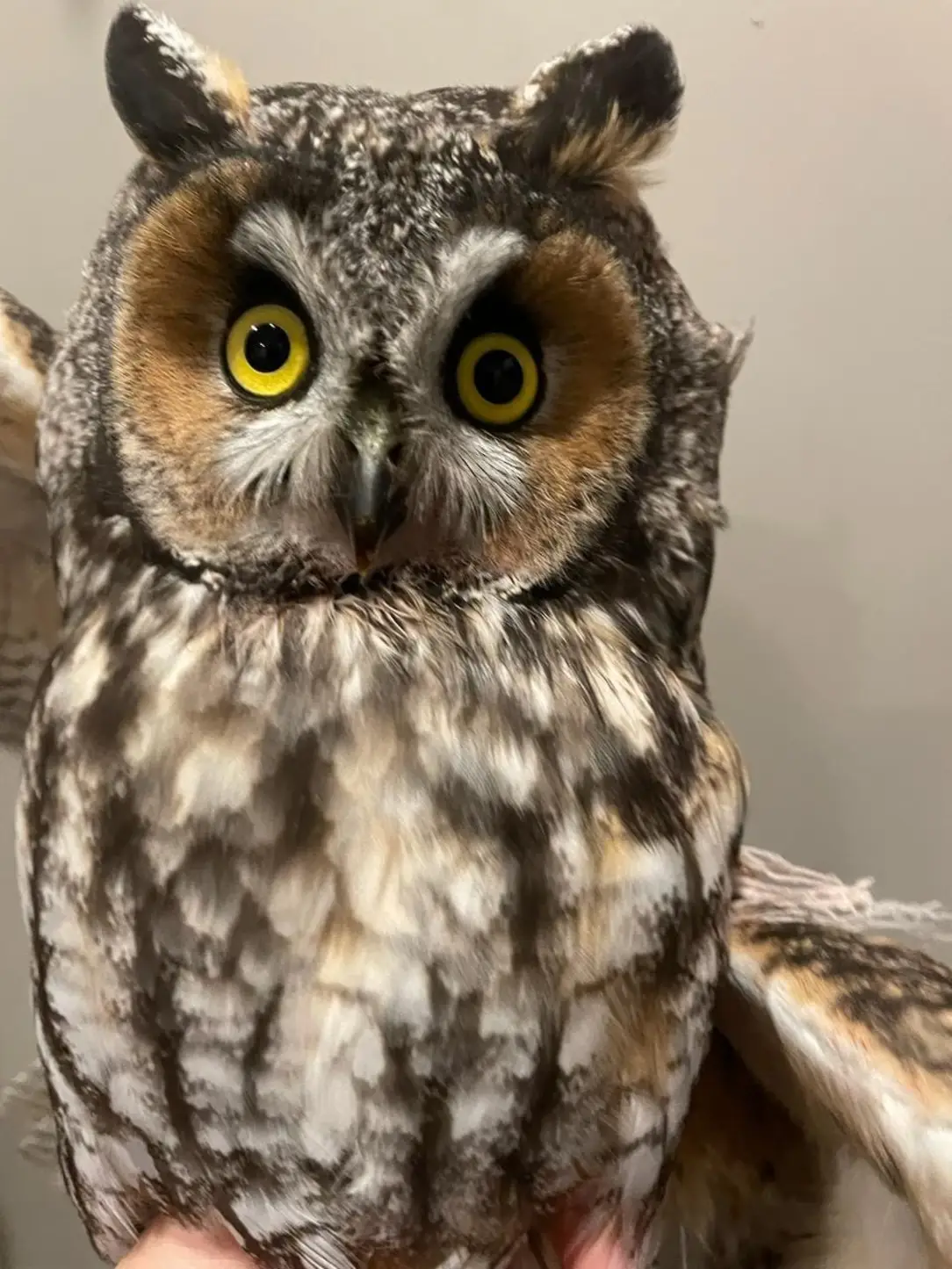

They did an amazing job! That fence really swiss cheesed this unlucky hooter.
I didn't see an update on it yet, but I was curious about the duct tape. Thankfully that was answered in an adjacent post on another bird:
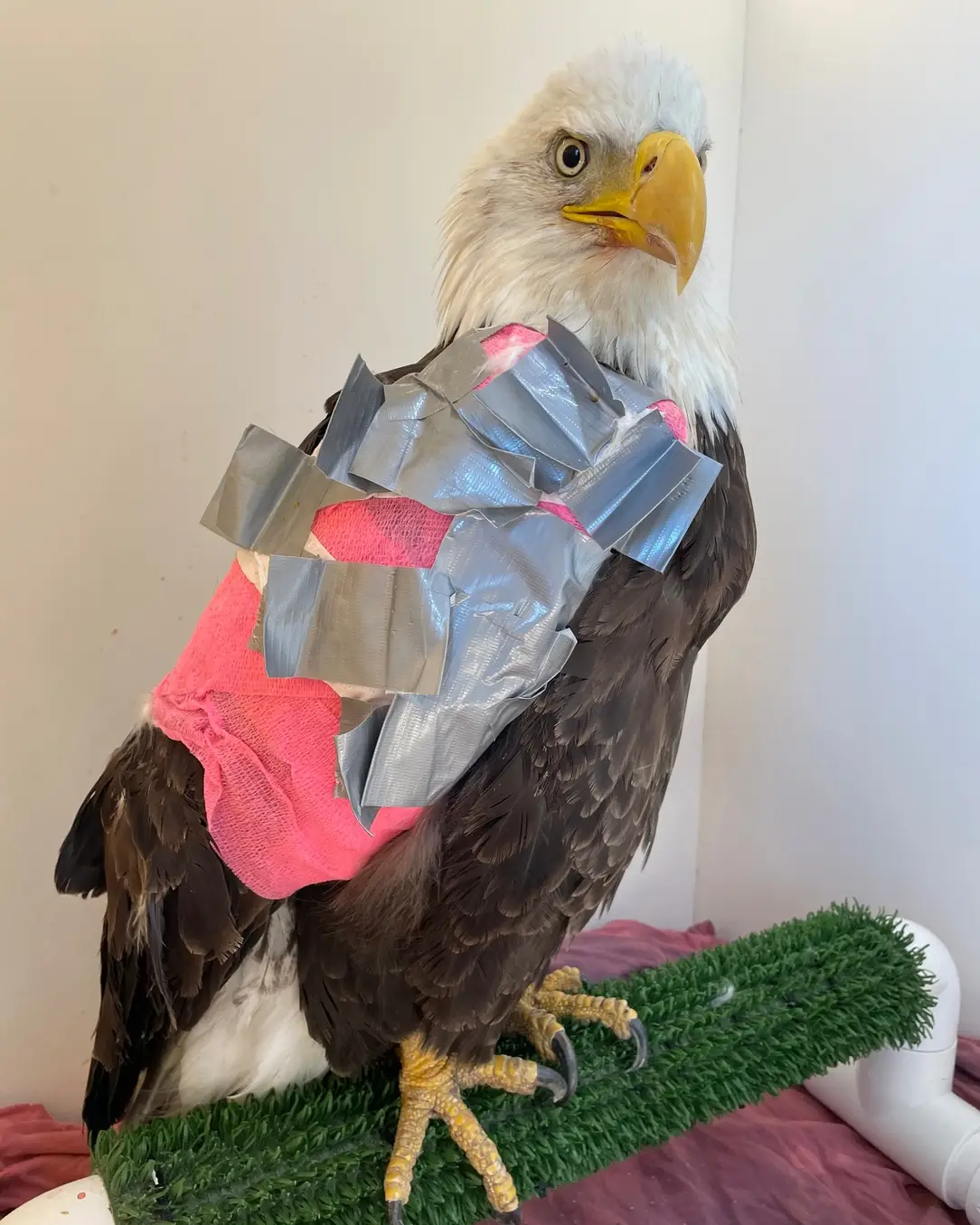
Bald Eagle 24-933 was admitted to our hospital over the weekend with open fractures of her right carpometacarpus, a bone near the distal end of the wing that is the avian version of the bones humans have in our hands. This injury was preventing her from flying and hunting, and she was very underweight and dehydrated when she arrived. Even in her debilitated state, though, 24-933 weighed more than our healthy Bald Eagle Ambassador Animal, Olivia, and now that 24-933 has begun eating again and putting on weight, we are all amazed by how enormous this bird is!
24-933 will be undergoing surgery this week now that she is stable enough for our veterinarian to attempt this tricky repair. In the meantime, the fracture is stabilized with a splint and a wing wrap, which you can see in this photo. The tabs of duct tape are only touching the bandages, not her feathers, and they give 24-933 something to pick at that will still keep the wrap fully intact! If you take a closer look at the tabs on the front edge of her wing, you can see some little bite marks on one of them...but the structure of the wrap itself is still untouched!
A wing wrap this large requires a lot of bandaging material, and we would love to receive donations of some of the supplies on our hospital wish list. We've moved some of the items that this Bald Eagle requires- Tegaderm rolls, vet wrap, Durapore silk tape, SAM splint material - to the top of our list to make them easy to find! You can find our hospital's Amazon wish list here.
I can't help but smile when they match their tree so perfectly! 🥰
My first thought was what's up with California?
I could find a bunch of articles talking about the usual stuff like conservatives and evangelicals arguing in favor of avoiding a ban, but Planned Parenthood and the ACLU are also frequent supporters of avoiding a ban on child marriage. The only reasoning I could find was "we don't have enough data," but I'm struggling to think of any positive things about allowing it. From the articles, it sounded like fringe religious beliefs and questionable things regarding immigration laws, but I am skeptical the pros of allowing child marriage for those outweigh a number of cons I could name.
I wasn't able to find any actual articles from PP or ACLU themselves about it, so does anyone have any insight? This seems a bit out of character for both orgs.
If it was this little fella' on the line, I just might hear it out... 🥰
Patches
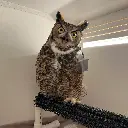
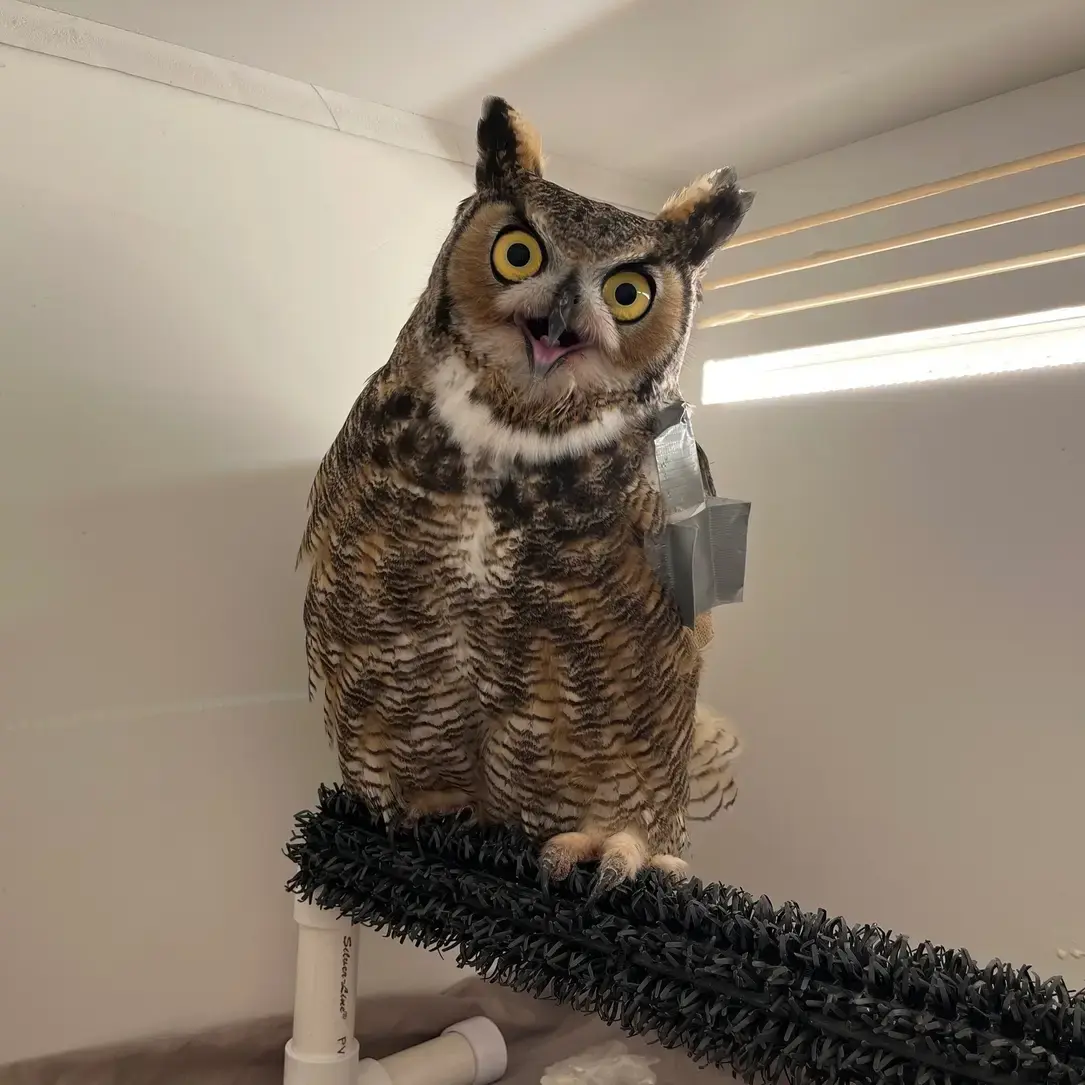
From NM Wildlife Center
>Most of the animals we admit to our hospital come to us because they have encountered one of the many anthropogenic, or human-caused, dangers in the wild. Great Horned Owl 24-910 is no exception: this bird suffered multiple injuries to his wings when he collided with a barbed wire fence. Barbed wire is dangerous to a lot of animals, but owls are especially susceptible. Most owls hunt in the dark or in very low light, and they fly low to the ground as they swoop down to catch their prey. A barbed wire fence can be nearly invisible in the dark and just the right height to snare a raptor as they fly down to catch their dinner. > >The fence caused injuries to both of 24-910's wings. Since so much skin was damaged at the injury sites, it was not possible to simply sew the holes closed. Instead, Dr. Avery - with assistance from Wildlife Rehabilitation Manager Stephanie - carefully removed some healthy skin from an uninjured area near the owl's leg, sutured that area closed, and used the skin graft to patch one of the barbed wire injuries on 24-910's wing! The other injuries were patched in a similar way using a hydrocolloid wound dressing instead of a skin graft. > >Just a few days after surgery, the skin graft site is healing well and so are the barbed wire injuries on 24-910's wings! The final photo in this series shows the area where the graft was applied and was taken just 4 days after surgery. Barbed wire injuries can be complex to treat and can involve damage to tendons, nerves, and other important structures, but so far we are pleased with 24-910's progress. As you can see in the first photo, this patient definitely still has the fierce attitude of a Great Horned Owl, which is a great sign!
I'll spare you guys the pokey pictures, but the recovery one was too good. The graft looked to be healing very well though, as they mentioned.
Driftwood

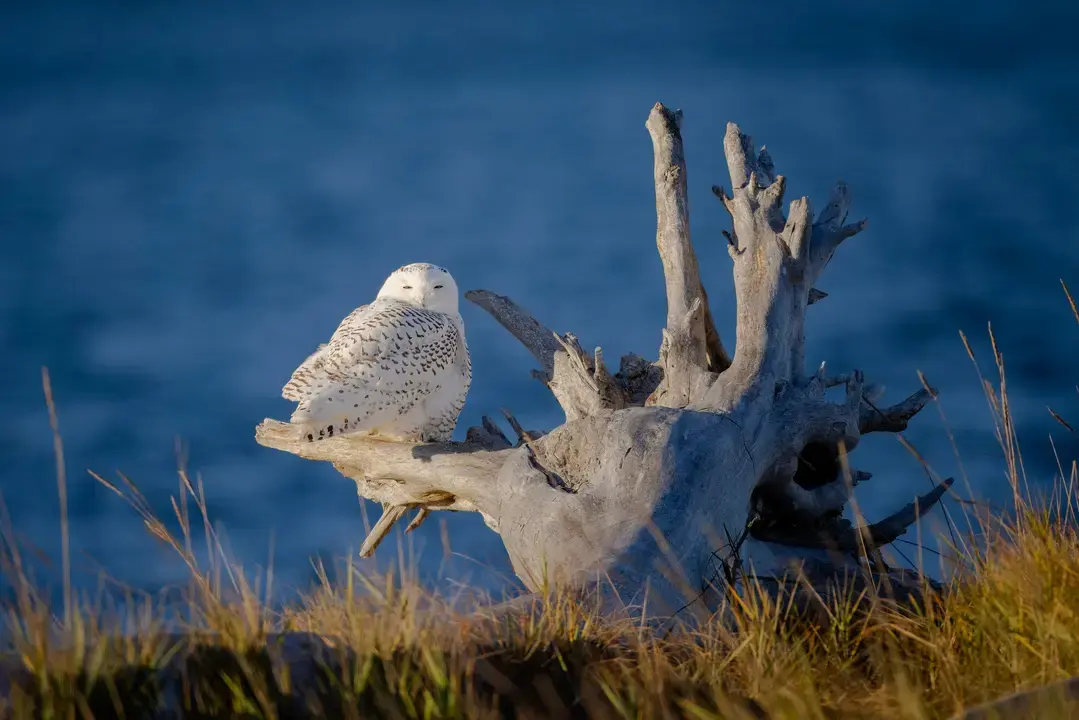
From TB3 Photography
>I was on my phone with my wife when I saw it sitting on this driftwood in the distance. My exact words were, "Holy S&*%! That's a Snowy Owl." > >It's been almost two years since I've seen one. Last year they were non-existent, so to see one so early in the season this year is very hopeful. > >It didn't stick around for long, however. While I was sure to keep my distance (this image is cropped), it was watching me very closely and flew off very quickly.
It doesn't count as dinner until it's in your belly...

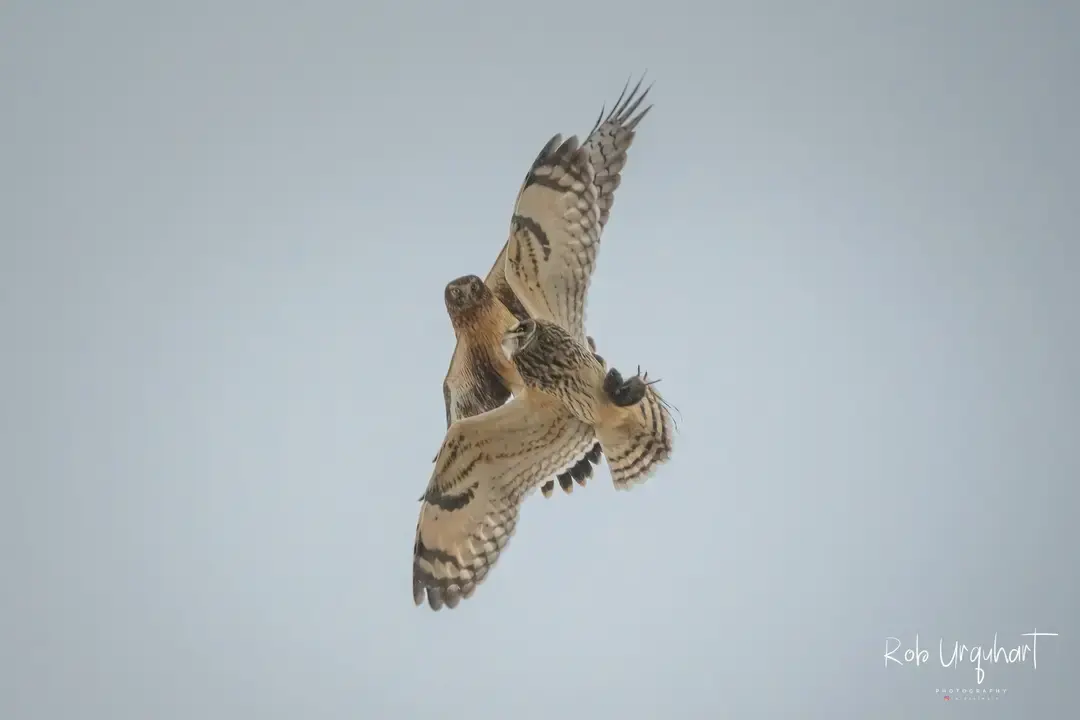
From Rob Urquhart
>My favorite owl pic from last year. Northern Harrier and SEO battle over rodent.
In the pic, I couldn't tell which, if, either one, still had possession of the mouse.
I found the photographer shared the photo on that other Superbowl community you may have heard of, and he said the Shortie was the one with a full belly in the end.
Bob Ross taught us to turn these things into happy accidents. Sometimes what seems like a mistake can lead to something wonderful. ☺️
I went to look at your comment. I'll be polite and summarize it instead of sharing the exact quote.
I was 18 and had a 17 year old girlfriend and we had a ton of sex. That's what 17 year olds do.
If you don't understand how the power dynamics are different between 2 nobodies of similar age vs a 17 year old and a 38 year old federal representative and his local gov buddy, you may want to read some things written about consent written in the last decade.
When I was 17, someone almost 40 was considered old as hell.
Edit: Article on coercion vs consent
They had her out of state, where she likely didn't really know where she was, likely had no one to get help from if she felt she was in a bad situation, and was there with very much more adult authority figures, and there were drugs at the party, so she may have also been under the influence.
You also can't fault someone for taking time to want to testify. She probably felt at least partially responsible, and he is a national figure. It takes time to get up courage to open yourself up to the whole world getting a chance to say things like you must have wanted it or did something to deserve it.
Placeholder

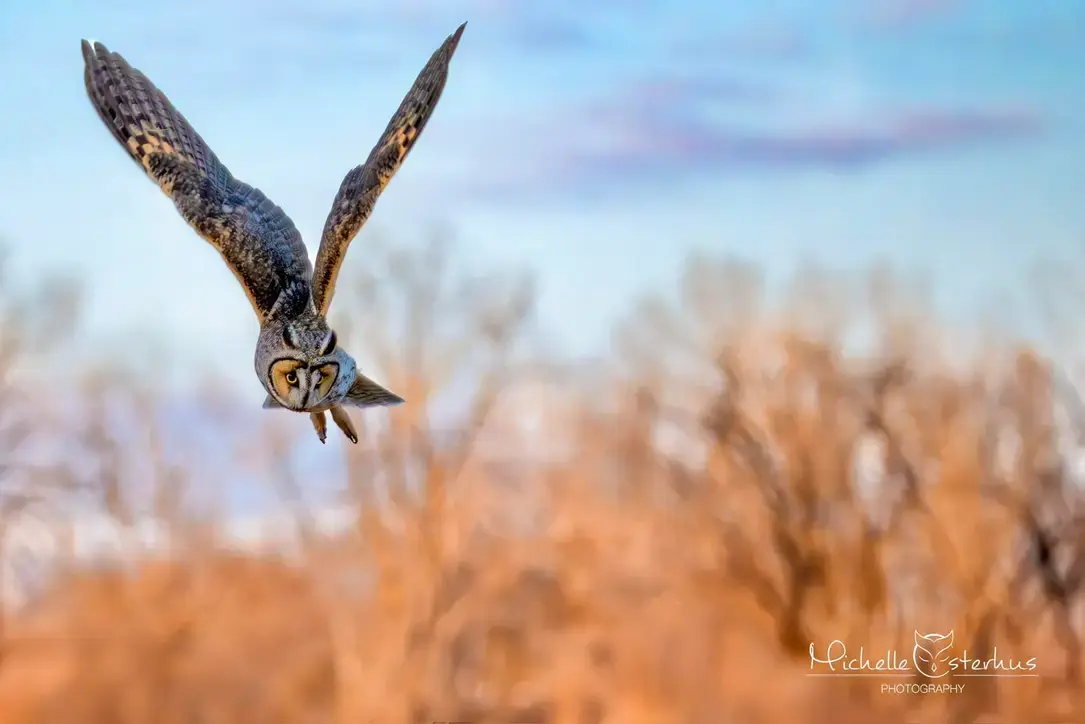
Hit post by accident on an incomplete draft and didn't want to see a dead post hanging out on my feed. Here's a Long Eared Owl to fill it in with something nice but simple.
From Michelle Osterhus
>So excited to spend some time with these guys again this winter!
It is unfortunate. I try and be mindful around new people to look visibly happy, or at least not in a bad mood. But I can't fault anyone for playing it safe. Especially since being harassed isn't something you can undo or something anyone should have to build a tolerance for. They may have also been in a previous incident that we don't know about.
If they're overreacting or not isn't really a strangers' business. We start to venture into egocentrism to think their behaviors have anything to do with us. It's just a live and let live thing. There's plenty of people over been nice to, and they still never liked me for one reason or another, but it's no biggie.
If it was a repeated thing, like they saw you every day and actively avoided you, that's a somewhat different story, but some person we only see once, it's not worth the mental energy to worry about it to me.
They do have principles, however oddly flexible they may be.
My family and the gf's are probably 90% conservative. They know I'm not, and to an extent they treat me differently. But I don't think they'd wish anything bad on me as they might a stranger.
You see this in the face eating leopard articles where they're always like "I never wanted them deported, they're one of the good ones.". Once they get to know someone, they see they're really not so different at the core and that they're good honest people like they see themselves.
I really think it's just some bad wiring in the empathy part of the brain. Most of these people still have a chance to learn better views on the issues. Some may truly be hateful misanthropes, but I feel that is a very small minority.
It's easy to hate conservatives right now, and I won't say anyone is wrong to be angry. The only non-violent way we preserve rights though is by getting people to understand strangers and develop that empathy.
Most of us probably know a number of hard to love people right now, but it's taken time to make them ignorant and hateful, so we can give up on them or we can put time into undoing what has been done to them. I can't tell anyone what is right for them, but it's something we all need to bear in mind.
I didn't get it at first, but once I looked it up, the cover art could not be more perfect!
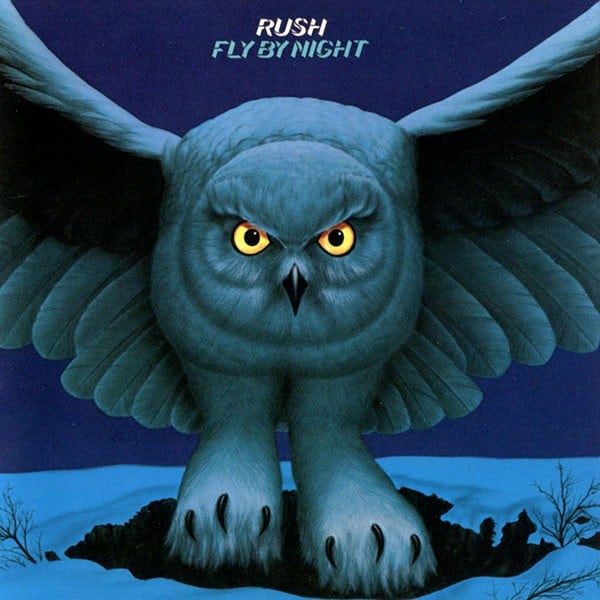
The tour shirt with the talons is awesome as well.

Reunion

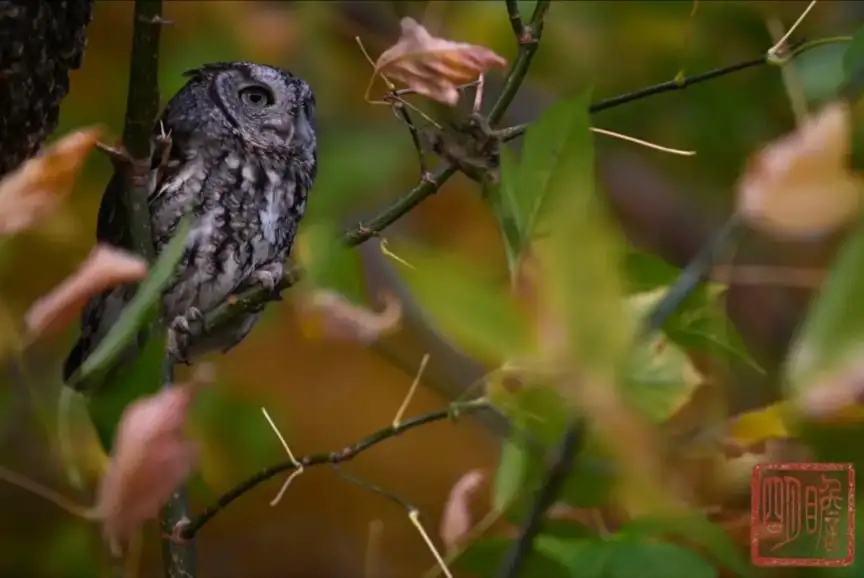
From Aaron Throness
>My first eastern screech owl of the season was a sleepy one, but more than made up for its drowsiness with being just downright cute! The other day, it leapt out of its cavity just as the sun was setting and availed itself for a few photogenic portraits before darkness blanketed the woods. I hadn't seem him/her for almost half a year, so it was a great relief and just as great a thrill to hold a reunion!
Setting Sun
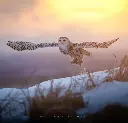
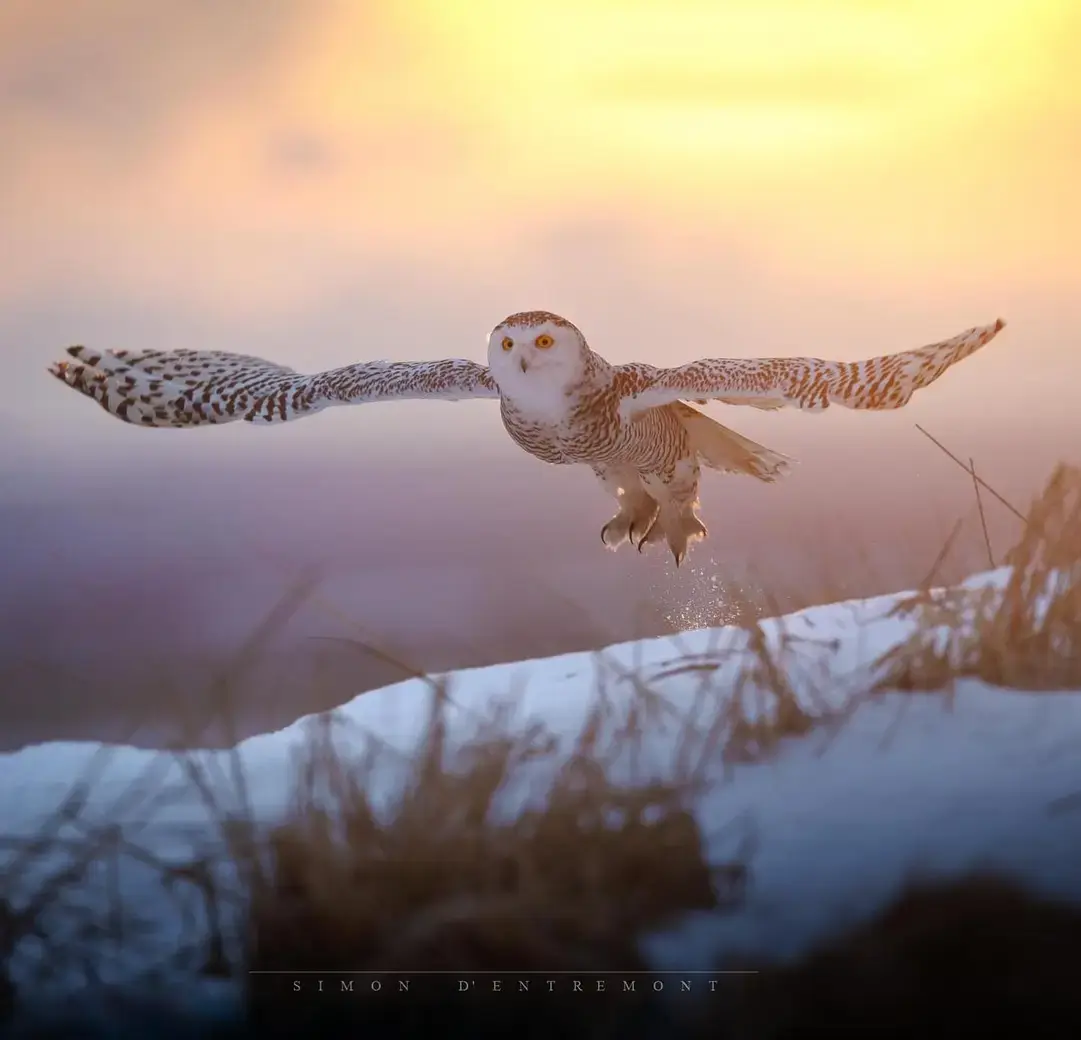
From Simon Dentremont
>This Snowy Owl (in French, Harfang des neiges) was sitting up on a bank, waiting for the sun to set to go hunting. I positioned myself so the setting sun was behind it for a nice portrait, when it decided to leave its perch, luckily for me, in my direction. One of my favorite pics all year. I especially like the sunset highlights on those furry legs and kicked-up snow. Nova Scotia, Canada, Jan 2022.
Pushing The Limits

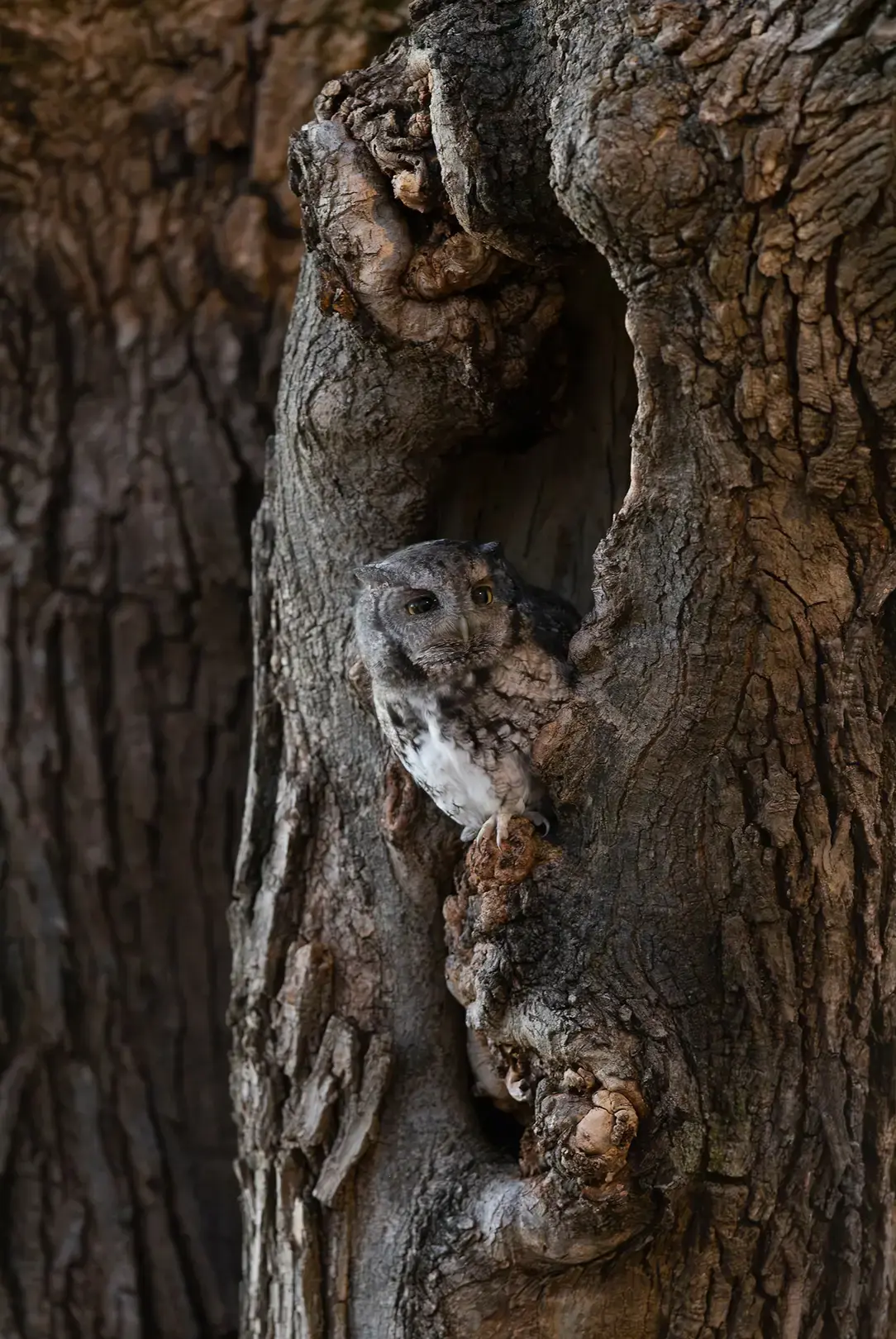
From Dan Minicucci
>Pushing the limits of what is possible for photography. > >By it's very definition photography comes from the Greek words phõtós, meaning "light", and graphé, meaning "representation by means of lines' or "drawing". > >In this case the light, barely any, is the bright open sky from the left and the nearly full moon on the right of the frame. The time stamp on this image is 5:03 pm a full 25 minutes after sunset! > >Leaning completely on the capability of modern technology this image is possible. The exposure information is : 5000 f/4 2.5" Canon R5 Canon 60Omm f/4 lens. I did the math to compare this to the technology started my career with nearly 40 years ago. > >The fastest film was 400 so converting that film speed to an equivalent exposure would result in an exposure of a whopping 32 seconds! In other words - a total impossibility to capture an owl preparing to exit its roost and hunt for the night. > >So enjoy the fruits of technology and dedication to spend another night with my camera in the company of beautiful nature.
Plumage Variations, Morphs, or Phases


From Rich Hoeg
>Plumage Variations, Morphs, or Phases. All three terms describe feather color differences in birds, and this case specifically owls. > >In the 1st image you are viewing a Great Horned Owl (GHO) adult and owlet. The parent has an "Arctic Phase' coloration to its feathers, which is very white. The photo was taken during June of 2023 in Alberta. > >Arctic Phase Great Horned Owls tend to live well north in Canada where the white coloration helps with camouflage during the snowy season. > >We now move south for a "Desert or Southwest Phase" GHO which I watched hunt in Arizona's Sonoran desert late yesterday afternoon. Its grayish white colors help blend in with the desert habitat.
>Finally we move to NE Minnesota. This GHO has a more common "Boreal Forest Phase". This particular owl has nested near my home for the past six years. Its brownish gray coloration helps the bird blend in with the white pine in which it is perched.
Zooooooom


From Lindy Pollard
>It was a good day. I photographed my 2nd Barn Owl at Perkins Peninsula Park, here in Eugene, Oregon. It makes me really appreciate my Nikon P1000 for the Zoom feature. I first heard crows harassing it. Then it flew to a couple of different trees until it landed in a 3rd one where I was able to photograph it. I was lucky it was perched in the sunlight.
Return to the Roost

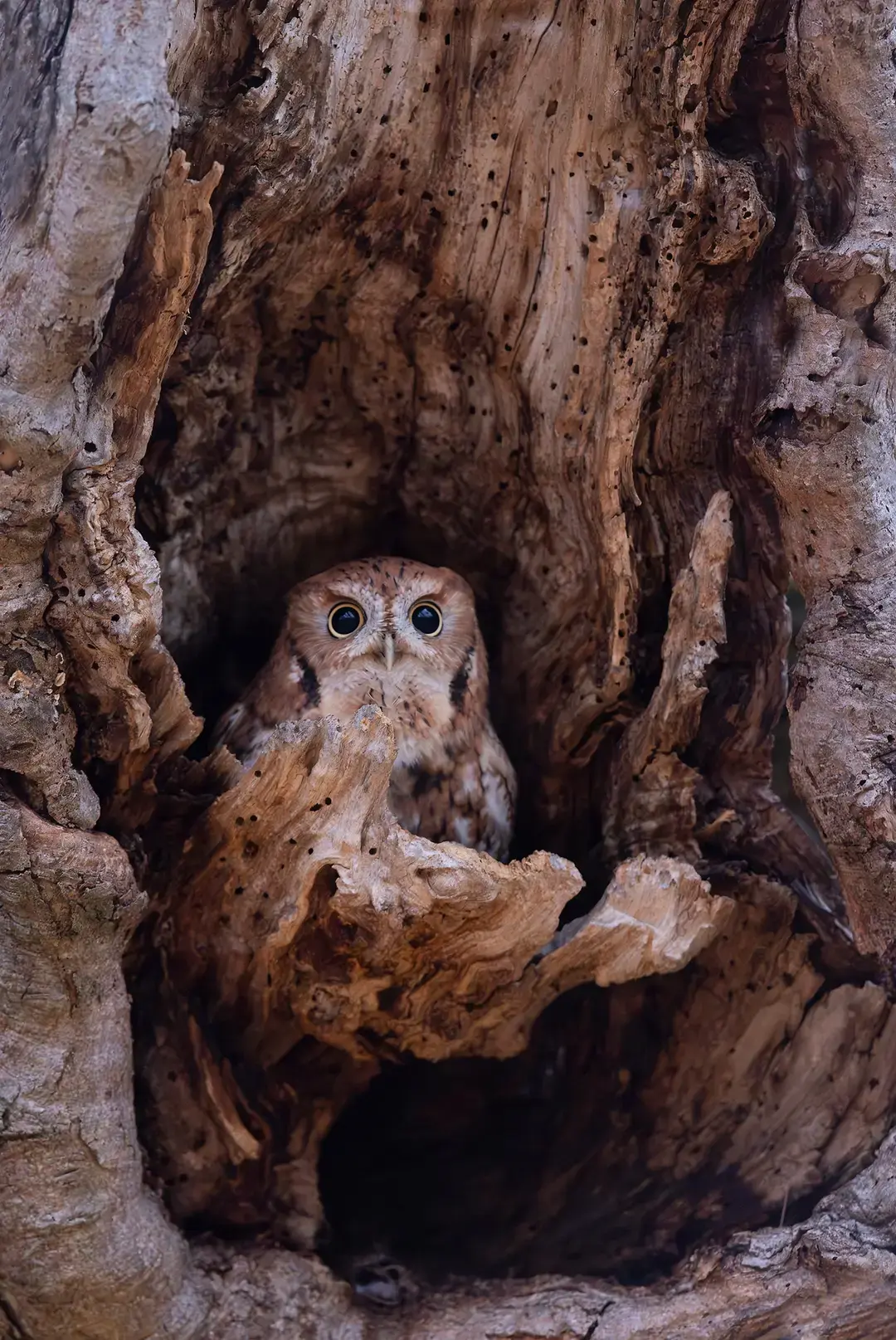
From Dan Minicucci
>After a night hunting the return to the roost, trilling with big wide eyes.
Working the Angles


From Simon Wardle
>Still a little color out there if you work the angles. Eastern Screech Owl.
Very Demure

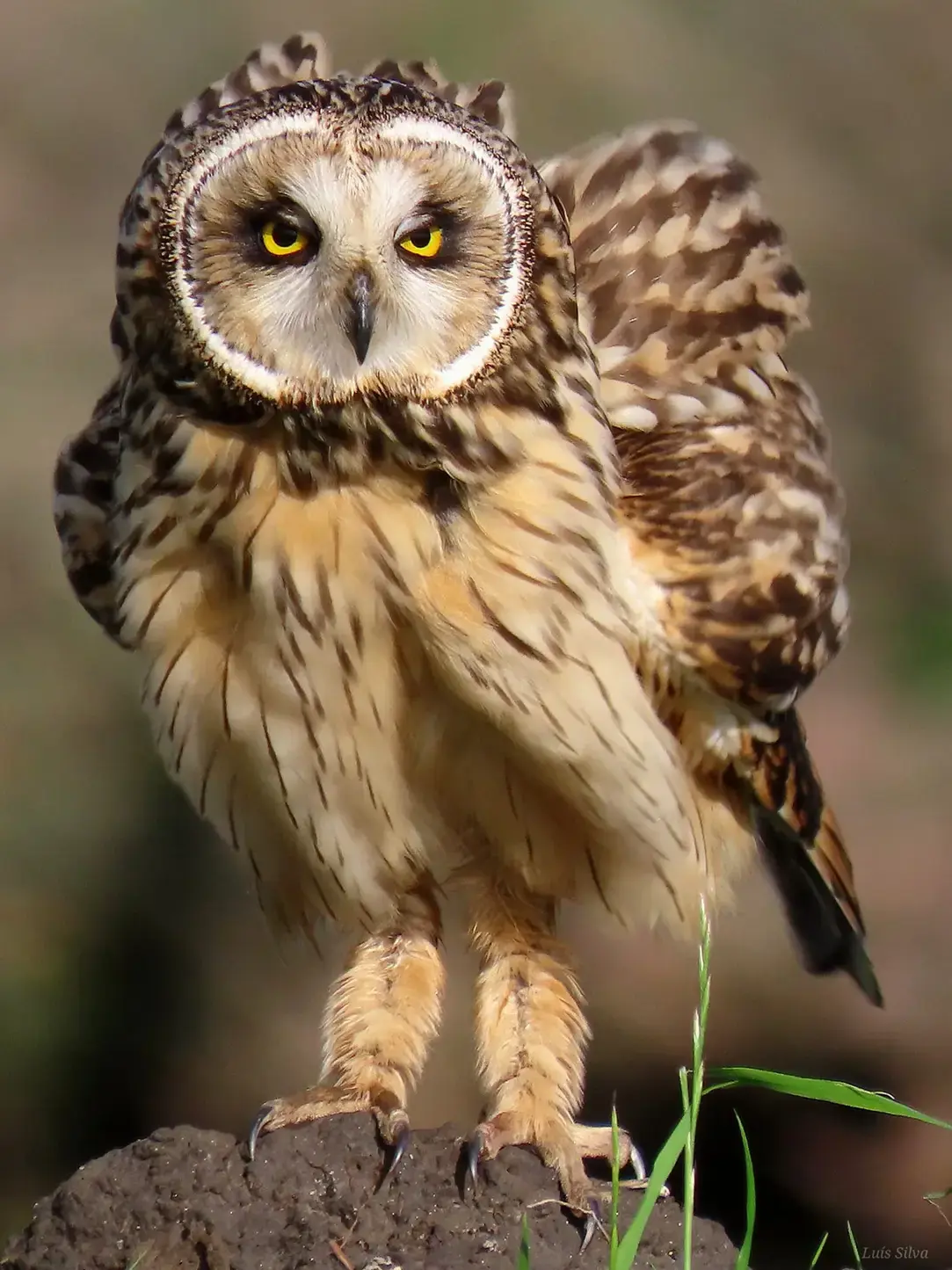
From Luis Silva
>Short eared owl. Asio flammeus. Figueira da Foz. Portugal. January 2024.
Wanted; People Who Love Great Horned Owls!


>Enjoy this photo dump of some of the patients we've seen this year. All of these owls have been released and we still have four in our care. This year, they've come to us for window and auto collisions, gunshots, fishing line, and electricity. Let's appreciate the beauty of these regal raptors and do our part in helping them stay wild.
Unconventional


From Ali Xaidi
>Hurricane Milton has created quite a predicament for the great horned and barred owls of Florida, forcing one of them to consider nesting in a stadium tower - a choice that seems a bit unconventional but necessary for their survival. While I would have preferred a more traditional nest for them, I am hopeful that they will overcome this challenge as they have in the past. Wishing these resilient RAPTORS all the best, especially after their previous nesting attempt failed due to a poor location choice. > >This image was taken right after this pair mated and then the male flew far away from her across the river to this stadium this behavior explains preparations for the nesting site nearby on a tower.
Better Late Than Never


From Simon Dentremont
>Even if this species is diurnal (meaning 'active during the day"), they often only come out late, which makes flight photography of them a challenge. This one decided to come out at the time of sundown, but on a cloudy day, so light was scarce. This was shot at f4, 8000. Thankfully my camera's autofocus performs well in low light. > >Short-Eared Owl (In French, Hibou des marais), Sackville, New Brunswick, July 2021.
Low Sun, High Owl

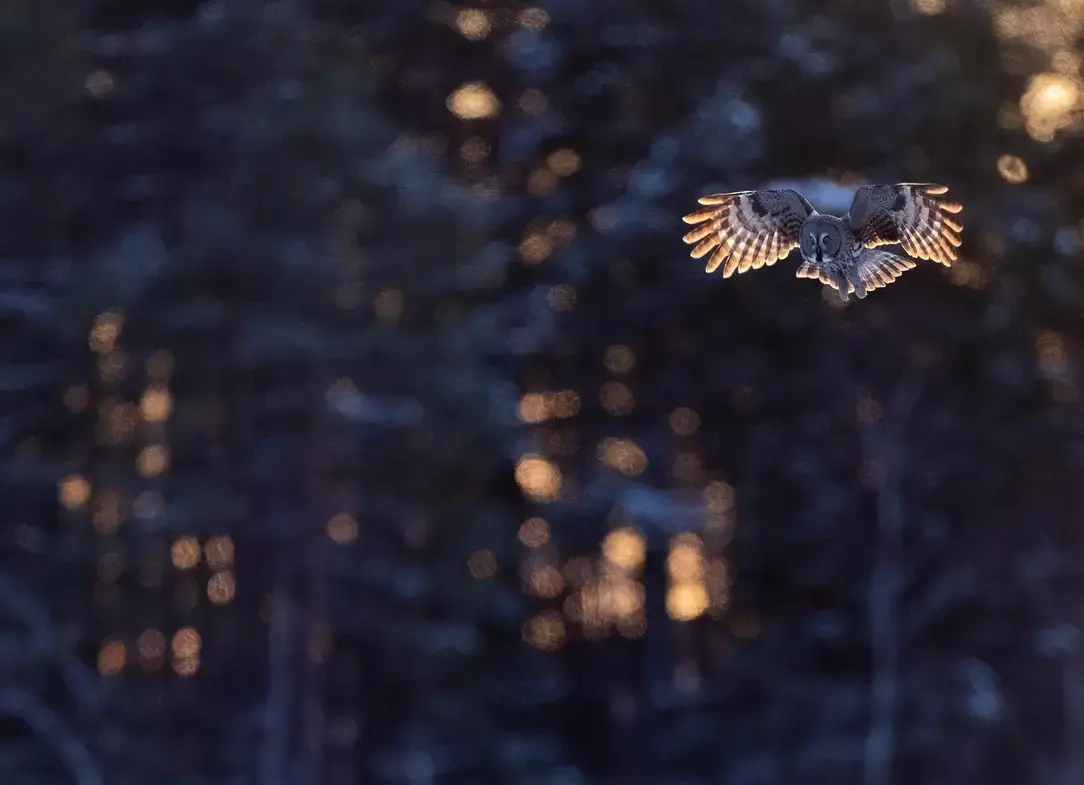
From Niclas Ahlberg
>A great grey owl hovering just before a dive to catch a vole. The low sun shines through the wings giving them glow. A magic meeting. I hope for more!


